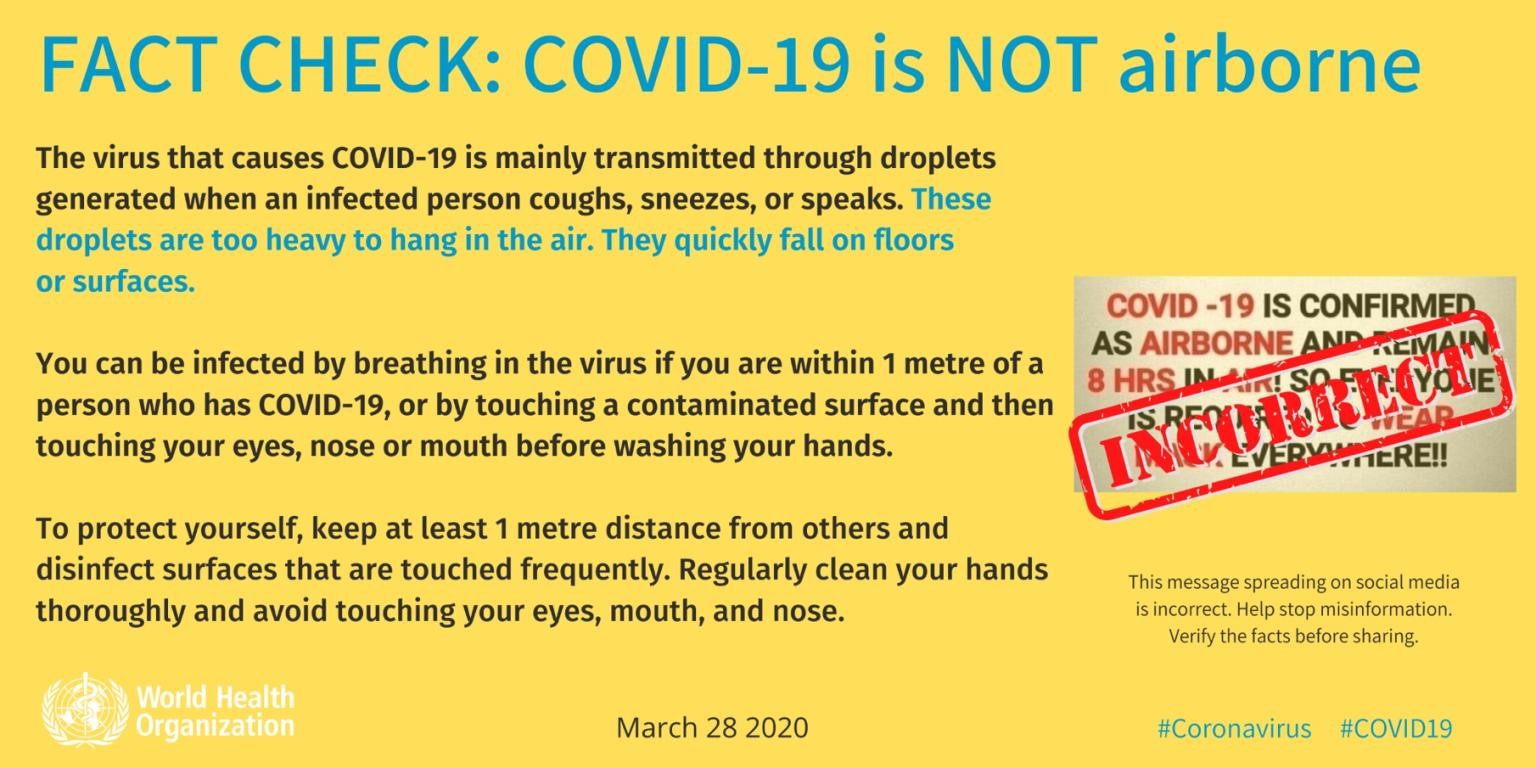We know that COVID-19 is a respiratory virus that can be passed onto people within close contact with an infected case. However, there have been debates regarding whether it is transmitted via droplet contact or airborne transmission. What’s the difference and which one is right?
Droplet contact
Droplets containing the virus can be generated when an infected person coughs, sneezes or talks. For people within close contact of the infected case (within 1m), they are at risk of contacting the respiratory droplets through mouth, nose and eyes. COVID-19 is believed to transmit via droplet contact directly with infected people or indirectly via contacting surfaces contaminated with infectious droplets. Since droplets are too large to suspend in the air for long periods of time, they quickly fall on floors or surfaces.
Airborne transmission
Airborne transmission is a different type of transmission, where the virus resides within the droplet nuclei (particles < 5μm in diameter). When the larger droplets evaporate, these smaller nuclei can remain suspended in air for much longer. The virus can also exist within dust particles. As long as air-borne particles are resistant to drying, they can be breathed into people’s respiratory tracts and cause infections.
Fortunately, there have been only a limited number of diseases that are airborne, including:
- Tuberculosis
- Chickenpox
- Measles
WHO: COVID-19 is not airborne
The latest scientific brief by WHO reports that COVID-19 is transmitted between people through droplet contact, not airborne transmission. Although there have been some studies that report detection of COVID-19 virus from air samples, WHO warns for careful interpretations of the studies. In 75,465 COVID-19 cases in China, airborne transmission was not reported.
The WHO holds the position that COVID-19 is not transmitted by an airborne route except in certain contexts where aerosols may be generated, such as in procedures like bronchoscopy and open suctioning. As such, the advices from WHO are:
- Keep 1m distance from others
- Disinfect surfaces frequently
- Wash hands with soup for more than 20 seconds
- Avoid touching your eyes, nose and mouth

Nevertheless, WHO’s label of “not airborne” for COVID-19 has received some criticism that we do not have enough data to completely rule out this possibility. Right now, it makes sense for people to continue the best precautions, especially social distancing and staying at home.
